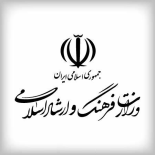
مد مفهومی و ترندها
مد مفهومی به شاخهای از صنعت مد گفته میشود که تمرکز اصلی آن بر ایدهها، مفاهیم و پیامهای فرهنگی، اجتماعی یا فلسفی است. برخلاف مد تجاری که هدف اصلی آن فروش و جذب مصرفکننده است، مد مفهومی تلاش میکند مخاطب را به تفکر وادارد. طراحان این سبک اغلب با استفاده از اشکال غیرمعمول، متریال نامتعارف و اجرای خلاقانه، پیامهای عمیقتری را منتقل میکنند.
مد مفهومی بیشتر در نمایشهای مد هنری یا گالریها دیده میشود تا خیابانها یا فروشگاهها. این نوع مد، اغلب لباسی نیست که مردم در زندگی روزمره بپوشند، بلکه بیشتر شبیه اثری هنری است که بر تن مانکن یا مدل، معنا پیدا میکند.
با این حال، ترندها که به معنای روندهای غالب در مد هستند، مسیری متفاوت دارند. ترندها معمولاً برگرفته از فرهنگ عامه، رسانههای اجتماعی، سلبریتیها و شرایط اجتماعی-اقتصادی هستند. آنها سریع تغییر میکنند و گاهی فقط چند ماه دوام دارند.
در سالهای اخیر، مرز بین مد مفهومی و ترندها کمرنگتر شده است. برخی طراحان تلاش کردهاند پیامهای مفهومی را به ترندها وارد کنند. برای مثال، استفاده از لباسهایی با پیامهای محیطزیستی یا اجتماعی که هم جذاب و مد روز هستند و هم حامل معنا.
ترکیب خلاقانهی این دو رویکرد میتواند به خلق سبکهایی بینجامد که هم عمیق هستند و هم مورد توجه عموم قرار میگیرند. در نهایت، مد نهتنها پوششی برای بدن، بلکه ابزاری برای بیان فردیت و تفکر است.
Conceptual Fashion and Trends
Conceptual fashion refers to a branch of the fashion industry that focuses primarily on ideas, messages, and cultural, social, or philosophical concepts. Unlike commercial fashion, which aims mainly at selling and attracting consumers, conceptual fashion seeks to provoke thought in its audience. Designers in this field often use unusual shapes, unconventional materials, and creative execution to convey deeper meanings.
Conceptual fashion is more commonly seen in artistic fashion shows or galleries than on the streets or in retail stores. This type of fashion is often not intended to be worn in everyday life, but rather resembles a work of art that finds its meaning when worn by a mannequin or model.
Trends, on the other hand, follow a different path. They represent dominant movements in fashion that are usually driven by popular culture, social media, celebrities, and socio-economic conditions. Trends change rapidly and sometimes last only a few months.
In recent years, the line between conceptual fashion and trends has become increasingly blurred. Some designers have tried to incorporate conceptual messages into trendy fashion. For example, clothing that carries environmental or social messages while also being stylish and current.
The creative blend of these two approaches can lead to the development of styles that are both meaningful and widely appreciated. Ultimately, fashion is not only a form of covering the body, but also a tool for expressing individuality and thought.













